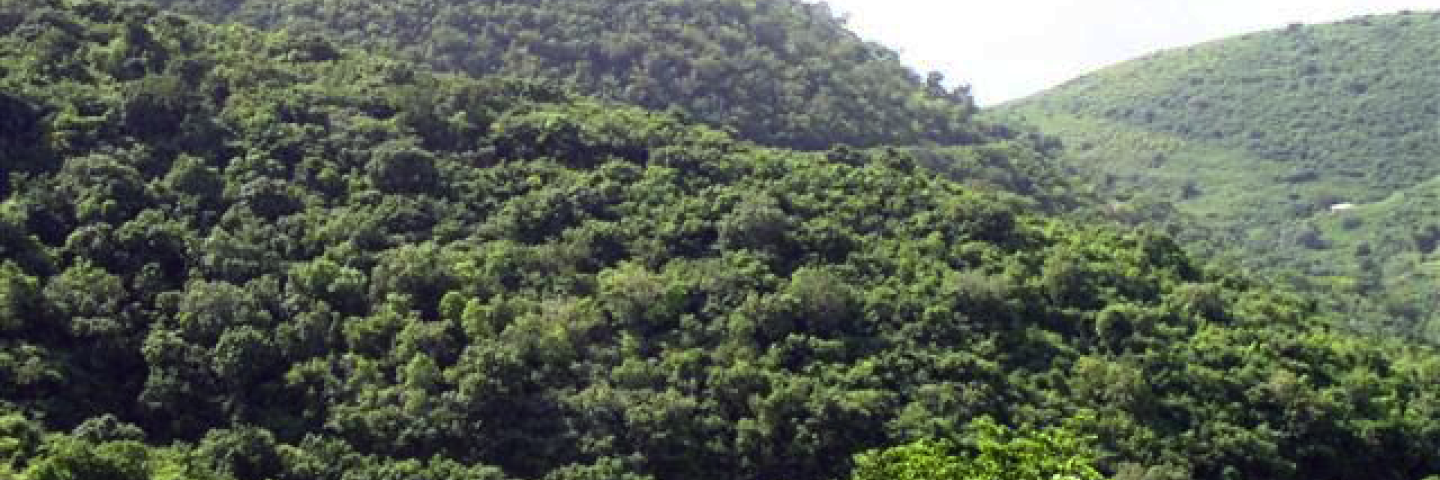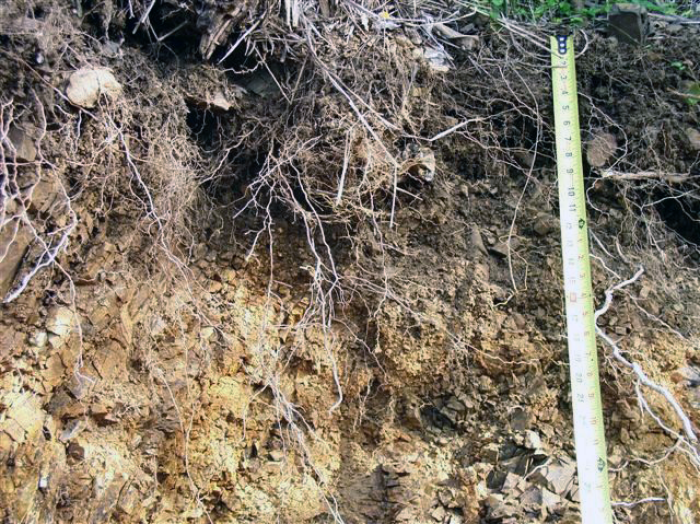

Victory soils are found on summits and side slopes of volcanic hills and mountains. They are used mainly as rangeland, pasture, and small areas have been subdivided for residential developments. The name "Victory" is derived from a local Estate, Mount Victory, in northwest St. Croix.
A typical Victory soil profile consists of a 15 cm topsoil of brown loam and a dark yellowish brown, brown and very pale brown loam to very gravelly loam subsoil to a depth of 84 cm. The underlying parent material consists of weathered and unweathered igneous bedrock. The Victory soils are formed in material weathered from extrusive igneous bedrock, mixed origin. These soils have a low to medium fertility and reaction ranges from slightly acidic to neutral throughout the profile, and are unsuited to cultivated crops.
Victory Soil Description
Setting: Victory soils consist of moderately deep, well drained, moderately permeable soils on summits and side slopes of volcanic hills and mountains. The climate is tropical semiarid. Slopes range from 2 to 70 percent. The mean annual precipitation is about 40 inches and the mean annual temperature is about 80 degrees F.
Soil Family Classification
Loamy-skeletal, mixed, superactive, isohyperthermic Typic Haplustepts
Victory soils are in the Inceptisols soil order. The term "loamy-skeletal" indicates that the subsoil has 35 percent or more (by volume) rock fragments; and less than 35 percent (by weight) clay. The term "mixed" indicates all other properties in the mineralogy control section. The term "superactive" indicates a cation exchange capacity (by NH4OAC at pH 7) to clay (percent by weight) ratio of 0.60 or more. The term "isohyperthemic" refers to an average annual soil temperature of 22C (72F) or higher and an annual fluctuation of less than 5 degrees (C) at a depth of 50 cm.

